Bobby Miller's Blog, page 6
November 7, 2023
The Beatles "Final" Song
I came to the Beatles at the perfect age. Anthology aired when I was a young teenager. It was appointment viewing. Before the series, I had only known the Beatles as that group on Ed Sullivan.
Anthology cracked it all open for me. And I fell hard for the group. Throughout my life, I’ve dipped in and out of their music. Sometimes swearing them off for years.
The birth of my son shifted me back into their world. The first music I introduced him to, of course, was The Beatles. And I found myself enjoying them again, hearing the music through his ears.
Peter Jackson's GET BACK sucked me in deeper. The 8-hour docu-series remains a towering achievement. Not only shining a light on their genius but also showing how hard it is to make anything. Watching The Beatles grind through mundanity was inspiring. Even the most beloved band on earth had to churn through the muck.
“Now and Then” has been marketed as "the final Beatles song." It originated from an old Lennon demo that was given to the surviving members sometime in the early 90s. The story goes, that the song was too rough, John’s voice obscured by piano, that they abandoned it.
The original press release proclaimed the song was "rescued by AI.” But this is misleading. This song doesn’t feature AI-generated Lennon vocals. It’s just been cleaned up. A couple of years ago we would have called this process “denoising.” But, now AI serves as a catch-all for all new tech.
But, enough with the preamble. How’s the song? Well. It's haunting to hear Lennon's voice again. Especially on a track that feels like a funeral dirge. The original demo always felt incomplete and this new imagining feels "fuller" of course, but the song is fairly one-note. Still, I found myself moved by it. And the damn thing has been stuck in my head all week.
But, then something happened that muddled the waters for me. One day after the single was released, a music video dropped.
Prepare yourself.
Peter Jackson directed and listen, I’m a fan! But, yikes…the music video is bad. It feels slapped together. As if the record label realized the song was too heavy and needed a light-hearted video to counterbalance.
I could write more, but uh, let me just post this animated gif instead:
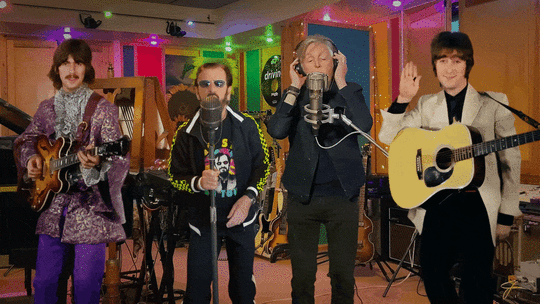
And this:

Nearly every time CGI John is on screen, he’s mugging for the camera. It’s jarring to witness on such a somber song.
The odd part of watching the video was that I still found the music emotional, despite the goofy CGI. It was a bizarre experience, wanting to tear up one moment, only to be violently appalled the next.
For contrast. Here are the videos for “Free As a Bird” and “Real Love.” The two songs created for the Anthology back in the early 90s.
I guess the question is, why do this? And I suppose it all comes down to Paul, who seems haunted by the song. Something he's mentioned many times in interviews. Knowing this information also makes the song feel heavier.
Watching the accompanying short film, it dawned on me that Paul McCartney was a mortal. One day he wouldn’t be around to tell us a Beatles story. In a way, the song’s release acts as a waking funeral. A way for everyone to say "goodbye" to the Beatles while Paul and Ringo are still alive.
It feels a little weird.
The new song moved me, and it remains stuck in my head. But part of me wishes we "ended" things with Get Back.
Thanks for reading Bobby Miller Time! Subscribe for free to receive new posts and support my work.
November 2, 2023
On Seasonal Depression
 A painting I made circa 2009.
A painting I made circa 2009.When I first moved to LA, I found myself at a small party showing movies on a projector. A buddy encouraged me to screen my short TUB, which had just made the rounds at film festivals. I told him it didn’t seem like a good idea. It wasn’t much of a “party movie.”
He won out, and afterward, awkwardness lingered around the bean dip.
“Are you okay?” a complete stranger asked me. “You must have some sort of mental problem, huh?”
Of course, I would go on to make The Cleanse, a creature feature that confronted mental illness head-on. Sometimes, at screenings, as the credits rolled, I would find a teary-eyed person in the back of the theatre. I knew the film didn’t work on that level for everyone, but when it did, I felt lucky. Like I connected.
It was chilly the other night, and I remembered the crippling depression I would get every winter season. It was all pre-Los Angeles. My east coast days in NJ, Philly, and NYC. Seasonal depression would slink over me like a rubber suit.
Sometimes, my depression would get so bad that I physically ached. I had trouble getting out of bed. Brain fog. Sometimes, my memory would vanish. At work, I had to write down basic reminders because I simply couldn’t recall things. I took pleasure in nothing. I was sleepwalking, just getting by.
And then spring came, and the fog lifted.
I’ve spent most of my adult life trying to fix this problem. Early on, I went on anti-depressants, but it didn’t jive, so I tried to figure things out naturally. I’ve used St. John’s Wort from time to time. But exercise and meditation were the only things that really helped.
Getting to the gym is a nightmare when you’re depressed. Walking was an easier sell for me. I’d walk from Washington Heights to Union Square. Trying to get out of the funk. But, no matter how far I walked, it still lingered.
These days, I can walk around the neighborhood and feel better after. It’s for this reason alone that I’ll never move back east. Still, I sometimes get a whiff of depression during the season change. It feels manageable now, a faint echo of an echo of an echo. But I remember those hard days, and I hope this finds you all surviving.
Thanks for reading Bobby Miller Time! Subscribe for free to receive new posts and support my work.
October 23, 2023
The Cleanse comes to Blu-Ray in 2024
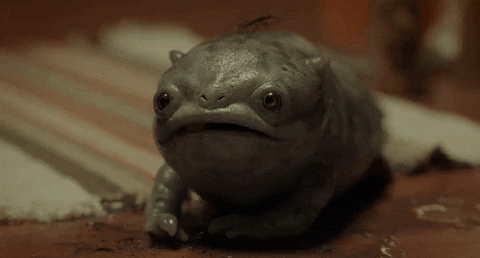
Folks, I didn't think it would ever happen. But I have good news to report. Sony will release my first feature, The Cleanse, on Blu-Ray in 2024.
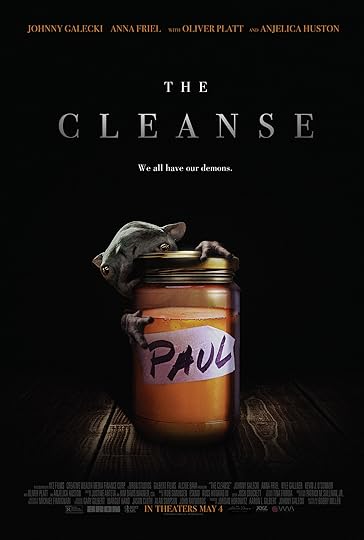
The film played in theaters and was released digitally. At the time, I couldn’t feel sorry for myself. I was lucky. But boy, did I want that physical media release. I don't know a filmmaker who doesn't! I wanted it so badly that I bought a DVD of my own movie on eBay:
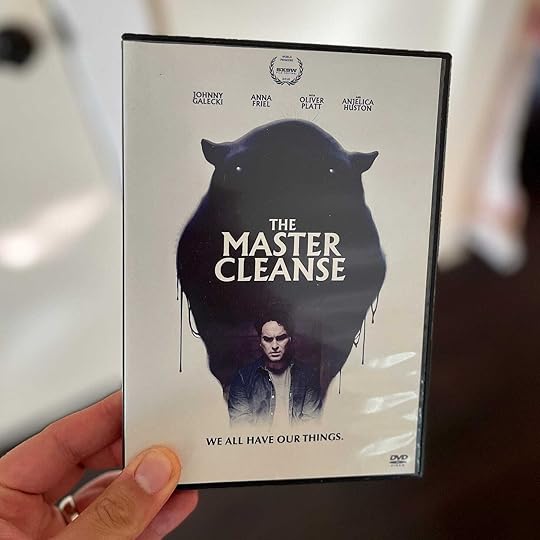 This bootleg was released with the movie’s original title!
This bootleg was released with the movie’s original title!After the DVD was shipped, I asked the seller where they found it. They didn't reply and then deleted all their auctions. At the time, I was bummed they closed up shop. I wanted there to be a place to buy the film somewhere. I didn't mean to spook them!
I don't have a release date yet. But expect a ton of special features. I've been sitting on a Dropbox folder of great stuff I've been dying to release.
I think this sudden reverse course speaks to a larger moment. Studios are realizing there's a market for physical media, especially in an age where shows and films randomly disappear on streaming services.
As a dude with stacks of vinyl records, blu-rays, and books. I welcome the change.
October 12, 2023
No one expected SAG-AFTRA to strike. Fewer expected them to negotiate.
When SAG announced they would strike back on July 14th, it took the town by surprise. Productions were shocked, caught flat-footed, with no contingency plans. Everyone assumed the WGA would strike, but no one took SAG seriously.
When the WGA struck a deal with studios several weeks ago, entertainment journalists all said, “SAG will settle quickly.”
The Ankler went as far as “two weeks tops.”
SAG resumed talks on October 2nd. Yesterday, the 11th, CEOS walked away from the negotiating table.
I received this email from SAG-AFTRA late last night:
Dear Bobby,
It is with profound disappointment that we report the industry CEOs have walked away from the bargaining table after refusing to counter our latest offer. We have negotiated with them in good faith, despite the fact that last week they presented an offer that was, shockingly, worth less than they proposed before the strike began.
These companies refuse to protect performers from being replaced by AI, they refuse to increase your wages to keep up with inflation, and they refuse to share a tiny portion of the immense revenue YOUR work generates for them. We have made big, meaningful counters on our end, including completely transforming our revenue share proposal, which would cost the companies less than 57¢ per subscriber each year. They have rejected our proposals and refused to counter.
Instead they use bully tactics. Just tonight, they intentionally misrepresented the cost of the above proposal to the press – overstating it by 60%. They have done the same with A.I., claiming to protect performer consent, but continuing to demand “consent” on the first day of employment for use of a performer’s digital replica for an entire cinematic universe (or any franchise project).
The companies are using the same failed strategy they tried to inflict on the WGA – putting out misleading information in an attempt to fool our members into abandoning our solidarity and putting pressure on our negotiators. But, just like the writers, our members are smarter than that and will not be fooled.
We feel the pain these companies have inflicted on our members, our strike captains, IATSE, Teamsters and Basic Crafts union members, and everyone in this industry. We have sacrificed too much to capitulate to their stonewalling and greed. We stand united and ready to negotiate today, tomorrow, and every day.
Our resolve is unwavering. Join us on picket lines and at solidarity events around the country and let your voices be heard. The negotiating committee will be at Netflix tomorrow at 10 a.m.
This morning on the picket lines, I expect Fran Drescher to lambast the studios for this mess.
I’d argue they deserve it.
In other news…Disney has already begun replacing background actors…
 @kelseykid_super excited to watch Prom Pact on Disney+ and then saw this 😵💫😵💫😵💫 still gonna watch it though.[image error]Tiktok failed to load.
@kelseykid_super excited to watch Prom Pact on Disney+ and then saw this 😵💫😵💫😵💫 still gonna watch it though.[image error]Tiktok failed to load.Enable 3rd party cookies or use another browser
October 2, 2023
INTERVIEW: DP/Director Michael Fimognari
Michael Fimognari was the cinematographer on my first film, The Cleanse. He’s since gone on to major films and TV (Dr. Sleep! Midnight Mass!) with frequent collaborator Mike Flanagan. I met Michael back in 2014 after interviewing a bunch of DPs. He was easy to talk to, laughed at my dumb jokes, and believed in over-preparing. I also liked that he had a few features under his belt. He really was an ideal collaborator on my first feature.
It’s a shame that he’s dead.
Just kidding. He’s alive and well. I reconnected with him ahead of the new show he shot and directed with Flanagan, premiering on Netflix Oct. 12.
 Me & Michael on The Cleanse
Me & Michael on The CleanseOh, hey dude. Welcome to www.BobbyMillerTime.com, the premiere website of our generation. This must be a pretty big honor for you.
This is the greatest thrill of my life unless I’m someday invited to Tea Time with Bobby Miller, in which case it will be the second-greatest thrill of my life. In all seriousness though, in summary and in conclusion, YES, it’s the greatest thrill of my life.
I know you as a cinematographer, but you’ve been directing a lot more lately. Can you talk about that transition? How do you see yourself these days?
Everything I did as a cinematographer was filtered through story and character, so the transition to directing was an expansion of that perspective. In my career, I’ve been fortunate to have a seat next to so many fantastic directors, including Mike Flanagan, Julia Hart, and Bobby Miller (WAIT, THAT’S YOU!), so I’ve seen many approaches to the work. Although I’m primarily focused on directing now, I love the visual design of filmmaking so much, so I continue to shoot when I direct, and I keep myself open to shooting for other directors too.
Mike Flanagan. You’ve been working with him for a long time. What keeps you coming back? I mean, obviously, he’s talented. But, like, does he make better jokes than I do? What is it?
I’m not comparing anyone’s jokes (I’m no Joke-ologist), but I will say the comedy is top-tier - and I mean that sincerely! Of course, it’s about the way the story is told, the way it’s visualized, and the work ethic behind the preparation and execution. But it’s also about being next to a person for days and weeks, and months and enjoying it. You and I were together for one summer on THE CLEANSE, and we had lots of good jokes (even on the hard days), which I think says a lot about our synergy and why I’d love to work with you again. Mike and I have spent the majority of the past 11 years working together, and over that time, we’ve built a creative language and process that is detailed and often non-verbal, and in that time, we’ve learned in addition to our aligned cinematic sensibilities, we share the same sense of humor and we laugh all the time. The comedic bits have evolved, become stories on their own, and some of them have leaked into our shows as inside jokes that are just for us.
 Shooting Dr. Sleep
Shooting Dr. SleepWhat’s your collaboration process like?
Mike is a master storyteller, from concept to finish. And he keeps upping his game and raising the standard higher for the team. He’s written the scripts for everything we’ve done, and in many cases, he’s created the stories too, so he intimately knows why everything is there, he knows every character’s intentions and backstory, and his story craft is bulletproof. Our process has evolved quite a bit over the years. It started with some paper scribbles and spreadsheets, and today is recorded on video calls with digital drawings so that we have a reference archive. We first read the script together, talk about story and character, and define the tone. The deck is built from those discussions, and I’ll refine that as we build a shortlist.
The shotlist begins with Mike drawing out specific character behavior in overhead location plans (or he’ll create set plans for what he wants a space to look like). Next he’ll plot out the shots and camera moves in equally specific terms. I’ll ask questions or offer ideas, and we’ll call that the first draft of the list. Later I’ll translate that plan into formal overhead diagrams and a very descriptive shotlist, which reveals more questions and discoveries, leading to a polish. Once we’re feeling good about it, those formal plans are shared with the entire crew.
My cinematography breakdown is built from those plans, so the equipment required and the time needed to execute each shot is provided to the crew as well. In recent years, most of our sets are stage builds, so these overheads are the driving force for the Art Dept designs, which then goes through a separate approvals process for Mike and I to determine how the sets will work for blocking, camera, and lighting. Once the stage plans are approved, the shotlist is updated yet again so that the plans in everyone’s hands on the shoot day reflect the actual physical space in which we’re shooting, as well as the mechanics of the build (for example, if a crane is needed for a specific shot, then the walls that need to move have been built for that kind of flexibility and it’s marked as such). The goal is to structure our daily schedule for maximum efficiency. And the best part is that within that detailed plan, we’ve given ourselves the tools to pivot if we feel the blocking or shotlist needs to change on the day.
How did you approach the episodes you directed in The Fall of the House of Usher?
I’ve decided to shoot when I direct. I find the visual expression to be a partner with the blocking, and I feel it’s a natural expansion of my skill as a storyteller. I go through the same process I described above, except I’m doing the first part in my head, then making the formal shotlist for the crew. Instead of relying on a separate cinematographer, I have close collaborations with the showrunner or creative producer, and editor, which has been terrific. Mike and I did a cool thing on The Fall of the House of Usher where we each directed four episodes, and I shot all eight episodes. In that workflow, Mike set the tone in the plan for his episodes, then I built plans for my episodes and shared them with him (he was the showrunner) so we had continuity in our execution.
 The Fall of the House of Usher
The Fall of the House of UsherWhen we worked together, you had young kids. At the time, I was a different person. It was my first feature, and the film came before everything in my life. I was laser-focused and working all hours. So, when I saw you taking time out with your family on the weekends, I was like. “HEY WHAT GIVES! THERE ARE NO BREAKS!” I have apologized for this several times. And I’m embarrassed to admit it here, on www.BobbyMillerTime.com, the premiere website of our generation. This is a long-winded way of asking: How have you balanced being a father and working in this industry?
Well first, I applaud you for doing the hard, often unseen work of the PREPARED director (yes, I’m making a distinction here between prepared and unprepared directors). Prepping and shooting is truly exhausting when you are evaluating and putting creative intention into every choice. There are no days off as a director, and it’s hard to come by an hour of personal time.
But the important question you’re asking is about balancing parenthood and the work. By far the most unforgivable part of our business is that it asks so much of our time, and it feels like an all-or-nothing proposition. Many of us have this unending passion for filmmaking that keeps the motor running every day and at all hours, so we put up with this work/life imbalance, but I don’t think it’s healthy.
I’ve asked producers over the years why we can’t do 10 hour days combined with an extended calendar and the answer is always about the cost of stage and equipment rentals, and cast schedules. It often feels like the only reason we stop shooting is because of the financial penalties associated with going past 12 hours, not the health or the family life of the people involved. I love the creative part, but the more I miss my kids’ lives, the more I hate the business part.
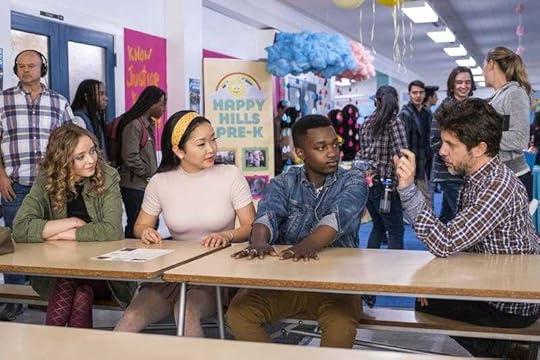 Directing on To All the Boys
Directing on To All the BoysI’ve long felt that the push for unionization sweeping the United States is a direct result of the pandemic. People living in quarantine had time to reflect and re-examine their worth. Can you please agree with me so that I appear smart? If not, why am I wrong?
I’m not smart enough to get into a smart talk with you, Mr. Smart. Like most, the pandemic instigated significant, course-changing impacts on my life, and while I can’t speak to unionization as a ripple effect of the pandemic, I fully support unionization for all work. When I was trying to break into the film industry, I was a part of those grueling non-union shoots, and they were dangerous and mean. The people with the money were not looking out for us, and there was no protection if we didn’t get paid (which happened to me often… those of you who still owe me for the work I did, you know who you are). Even after joining the union for many years, I had to call the union to report unsafe conditions, unpaid crew, or other violations. Without that union collective (in all industries), I feel that the people with the money will take advantage of the people who need to work. GO UNION.
Has the pandemic changed how you approach the business?
The main change is that I’m doing even more to make time for my kids. Since we had to do so much work from a distance during the pandemic, we learned what can be done well remotely, so I’ve taken advantage of those opportunities. Most of that is in post-production, which has allowed me to have more time with my kids during the editing and color processes since I can stay home until the final mixes, color, and scoring.
You moved back to Pittsburgh from LA before it was cool to do so (pre-pandemic). Your logic at the time was, “nothing shoots in LA anyways.” Are you still there? And how has it been to work “in Hollywood” from Pittsburgh?
I’m still in Pittsburgh and love it. It’s a small city with big city stuff. I’ve never worked in Pittsburgh, but the move was intended to create more space, provide good public schools for my kids, and to experience autumn colors and winter snow - all of which has worked out great. I’ve also enjoyed the clear break from the film business when I’m at home.
There you have it. Another classic interview. I can’t wait for the praise to roll in on this one. Am I the next Charlie Rose? Many people are saying it. Except for the part where he got canceled.
Thanks to Michael for his time. And be sure to check out The Fall of the House of Usher on Netflix October 12th.
Thanks for reading Bobby Miller Time! Subscribe for free to receive new posts and support my work.
September 26, 2023
The Writers Guild kneecaps AI
The Writers Guild of America strike ends at 12:01 tonight.
The guild recently released details of the deal they struck with the studios. That link, in particular, shows what was offered in May compared to what was agreed upon this weekend.
Spoiler alert: The WGA did very well for their members.
But, you know me. The first thing I scrolled to was the AI section of the agreement.

The above is a a plain-spoken version of the more detailed legalese contained in the full agreement.
I drank a beer and dove into the latter.
I’m not a lawyer, you guys. And again, I was having a beer. But, I’m going to do my best for you, my dear readers, to interpret this legal document:
Yes. A studio can still bring writers AI-generated material to rewrite.
But, what the full agreement appears to do, is kneecap and decentivize using the tech. If I’m reading correctly, you can’t pay someone less to rewrite AI because the AI-generated material isn’t considered “source material.” It also states that AI-generated material can’t be given writing credit, nor be the basis for disqualifying a writer of separated rights.
In other words, writers still retain rights to the material they wrote. The company that used AI isn’t given those rights. And their compensation isn’t affected. Also, companies can’t train AI on writers unless they opt in.
This allows companies to “experiment” with AI. However, if it doesn’t save companies money or allow them to retain rights, what’s the point?
As Adam Conover (WGA negotiator) explained on Twitter:
“Per copyright law, a human writer MUST be involved in the writing process for the companies to claim copyright over the output. Therefore, they will always need human writers.”
Is your brain in knots yet?
Listen.
In May, the studios offered this:
“Annual meetings to discuss advancements in technology."
And the WGA went in and got legit protections.
This is a big first step for artists in the battle against AI. One of a series of wins I hope (and believe) will continue once SAG works out its deal with the studios.
Meanwhile, in the courts…

Thanks for reading Bobby Miller Time! Subscribe for free to receive new posts and support my work.
September 11, 2023
Should Harmony Korine's new AI film make a dollar?
I’m a fan of Harmony Korine. Hell. I own The Beach Bum on Blu-ray. I’m thrilled he found a rich dude from the Paris Review to fund his future endeavors. But…

His latest film, Aggro Dr1ft, uses AI-generated “art” from Stable Diffusion, the same software getting sued by visual artists. I want to see what Harmony is up to. But, AI “art” openly steals from artists without consent, credit, or compensation. And AI software is built by people making less than $2 an hour.
Yes. Your boy who wrote “AI art is for losers” is at a crossroads.
If the U.S. had AI regulations in place or any sort of legal framework, the issue would be moot. The visual FX in the film would constitute copyright infringement.
Or would it?
There is a lot of confusion around the terms “AI” and “machine learning.” I’ve seen “machine learning” applied in visual effects for years now. Things that help speed up mundane tasks. You could argue rotoscoping is part of this.
But rotoscoping and me typing into a text prompt are not the same thing.
Exhibit A.
“Generate a smiling creature in the style of ET designer Carlo Rambaldi.”

This hits different for me.
Does it for you?
The confusion around the term “AI” is intentional. Wallstreet loves the buzzword. And people are lining their pockets on the mere whiff of massive human job loss.
So does Harmony’s latest use “AI” or “machine learning”?
It’s been reported the film uses Stable Diffusion. Which means someone typed stuff into a text prompt to generate the visual effects. In other words, real-ass AI.
But I dunno. Does anyone care?
The unions have voiced their opposition to writers and actors getting replaced by AI. But will these same people speak up for visual artists?

I’ve been writing about this since February, and I’m trying really hard to see the other side. I don’t want to be pithy or close-minded. So, here’s my “evolved take.”
If the film uses AI-generated art, release it for free, or don’t release it at all. Screen it in museums. Put it up on YouTube without ads. But don’t make money off it.
Thanks for reading Bobby Miller Time! Subscribe for free to receive new posts and support my work.
September 4, 2023
Bottoms: The best theatrical comedy in years
It’s rare to witness a fresh new voice on the silver screen. But that’s what Bottoms was for me. It’s also the funniest film in years and a rebuttal to every tired comedian who says you can’t be politically incorrect anymore.

There are plenty of off-color jokes in Bottoms. Jokes that in overly sensitive circles would earn a trigger warning. But, in this film, there are no apologies, no desire to smooth over ruffled feathers. The joke happens, and we move on to the next one.
Bottoms lives in an alternative reality, a heightened satirical world. You could compare it to such greats as Heathers, Mean Girls, or Election. But Bottoms is very much its own thing, charting its own path. It’s a minor miracle it exists in a world of IP excess.
Ayo Edebiri and Rachel Sennott have natural chemistry, an unforced rapport that calls to mind Michael Cera and Jonah Hill in SuperBad. Ayo is fantastic, a stand-out, and she possesses a sweetness that grounds the film. But it’s Rachel’s character that I found most refreshing. A hilarious gay lead with selfish goals, someone who just wants to get laid. There’s a fuck-you freedom in her performance.
This is writer/director Emma Seligman’s follow-up film to Shiva Baby. A much smaller, intimate comedy/drama that premiered on HBO during the pandemic. It was highly enjoyable, and I assumed she’d continue making similar films.
Finding out she had a broad, satirical film like Bottoms in her back pocket was an exciting discovery. A hint we might be in the hands of a budding comedic auteur.
I can’t wait to see what she does next.
Thanks for reading Bobby Miller Time! Subscribe for free to receive new posts and support my work.
August 29, 2023
How I got my toddler to eat a vegetable
Stop me if you’ve heard this before. My toddler won’t eat vegetables.
When he first began eating solid foods, he ate everything. We were quick to pat ourselves on the back. Look at us, great parents. You might as well put us in the Hall of Fame.
Over time, reality set in. He became a picky eater, like most kids his age. Still, I wanted him to eat at least try a vegetable. But putting one in his mouth was a non-starter. He didn’t even humor my ass.
Actually, sometimes he would. He’d put his mouth up to a piece of potato and say, “I tried it,” and put it back on his plate.
I was racking my brain for an angle.
Then, one day, we were reading a kids’ book on gardening, and it hit me.
I’d get him a tomato plant.
So, we went to a nursery, and he picked one out.

This was the start of my long con.
I was like Danny from Ocean’s 11 up in here.

I have a small garden with drip irrigation. IE. I don’t have to water my plants every day. But I didn’t want him to just watch something grow. I wanted him to work for it.
So I put the tomato plant in a pot and got him a watering can.
For months, we watered the thing. I kept telling him this was his tomato plant, hoping I was building personal investment. Hoping he’d take pride/interest in eating it.

Months went by, and it was time to test it out. Would he actually put this thing in his mouth? Instead of just dabbing it lightly with his lips and throwing it across the room?
He picked the tomato by himself and seemed excited.
Could this actually work?
Could I be the greatest Dad ever to walk the earth?
I added a little kosher salt and olive oil to sweeten the pot.
(DESPITE MY LAST NAME, I AM ITALIAN, AND I WILL CONTINUE TO REMIND EVERYONE.)
And...

He ate it.
He ate a fucking tomato.
The heavens parted, and I was ready for my induction into the Fatherhood Hall of Fame. Clearly, I had risen through the ranks. This idea, this long con, had worked.
After the initial slice, I offered him another. He ate it but balked at the third.
“That’s okay, Daddy, I’ve had enough.”
I’ll take the win.
Thanks for reading Bobby Miller Time! Subscribe for free to receive new posts and support my work.
August 17, 2023
AI companies are ingesting my face.
HaveIBeenTrained.com allows you to search an image database used to train popular AI art models. One of which is Stable Diffusion, the company famously being sued by artists.
I decided to enter my name + The Cleanse (my first movie) just for the heck of it.
I didn’t think it would yield any results. But…
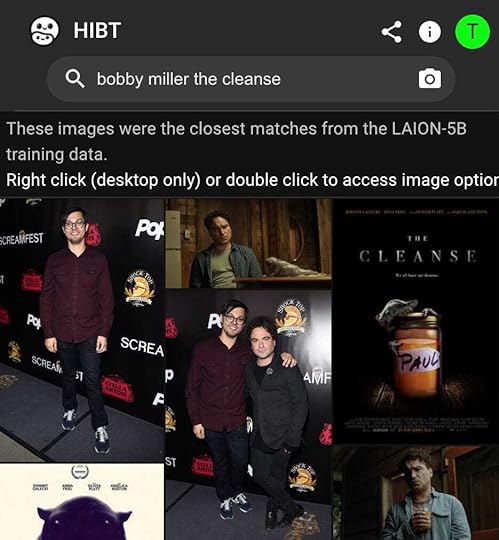
Yep. My face has been fed into AI.
As well as poster art and film stills from The Cleanse. Sure. I don’t own that movie. So, what are they ripping off from me personally? But what about the artists who created the creatures in the film?
I entered names of fine artists I like, and so much of their art was ingested. Even more troubling, if I prompted Stable Diffusion with, “in the art style of (their name here).” The program knew what I was talking about and made copycat artwork in their style.
There’s an “opt-out” feature on the site. But it’s not exactly real. You’re not opting out of anything. If I’m reading correctly, this website’s end game is selling a list of people and images that have “opted out” to AI companies that want to engage in “ethical AI.”
Ethical AI.
It’s a term I keep hearing. Most recently, on the deadline podcast.
Ethical AI and the basis for most class action lawsuits revolve around three things:
Consent
Credit
Compensation
It would be nice if AI companies adhered to the “3 CS”.
Yet…Even in a world of “ethical AI,” I keep coming back to this notion…
Why are we doing this?
There’s this sense that “This is just the way of the future. Get on board.”
But…like, why?
Why are we rushing toward a future no one wants?

The answer is Wallstreet.
Investors are rewarding any company that shoves “AI” into its business strategy. Most of it is nonsense, overhyped — a grift. Still, wealthy shareholders are falling over themselves to invest in the next big thing, lining their pockets while they can.
But to what end?
And why do these motherfuckers want my face?
Thanks for reading Bobby Miller Time! Subscribe for free to receive new posts and support my work.



